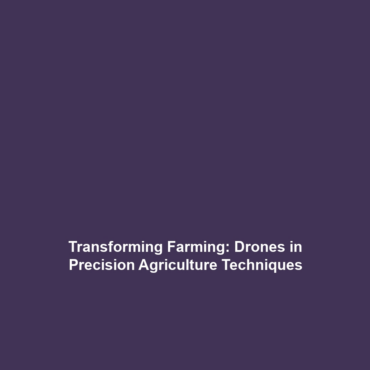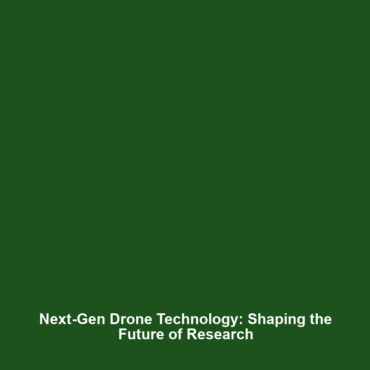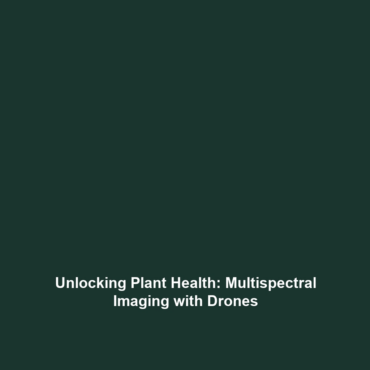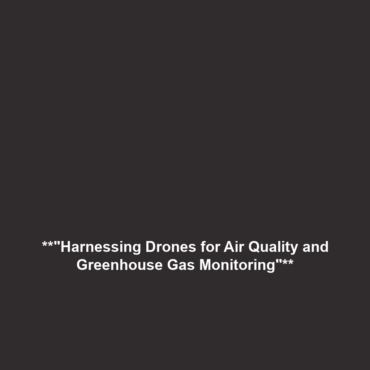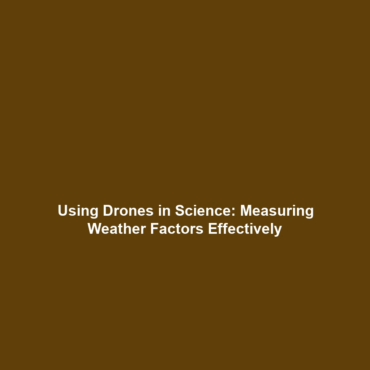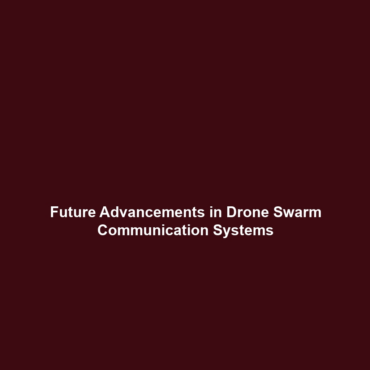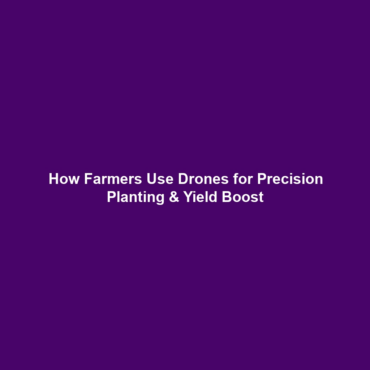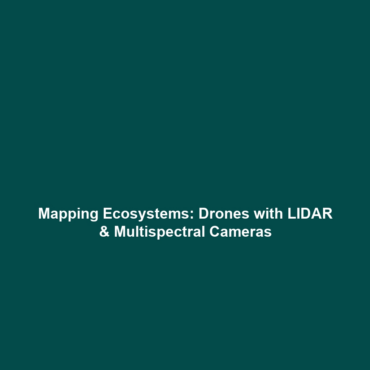Precision Agriculture: How Drones Optimize Farming Practices
Precision agriculture is transforming farming practices through advanced technology, particularly with the use of drones. This innovative approach enables farmers to monitor crop health, assess soil conditions, and manage resources efficiently. As a vital aspect of scientific advancements in agriculture, the integration of drones into precision farming practices not only boosts productivity but also promotes sustainable farming methods. This article delves into the significance of drones in precision agriculture, their applications, challenges, and future innovations in Drones in Science.
Key Concepts
Precision agriculture leverages data-driven technologies to enhance farming efficiency. Key concepts include:
- Remote Sensing: Drones equipped with sensors collect data on crop health, soil moisture, and nutrient levels.
- Geographic Information Systems (GIS): Integration of drone imagery with GIS allows for detailed analysis of farmland.
- Data Analytics: Analyzing collected data helps farmers make informed decisions regarding crop management.
- Variable Rate Technology (VRT): Drones enable precise application of fertilizers and pesticides, reducing waste and environmental impact.
Applications and Real-World Uses
Drones have a variety of applications in precision agriculture, reinforcing their pivotal role in Drones in Science. Significant uses include:
- Crop Monitoring: Drones provide real-time aerial imagery for monitoring crop health and detecting diseases early.
- Soil Analysis: Drones can map soil variations, helping farmers understand nutrient deficiencies and plan accordingly.
- Irrigation Management: They facilitate targeted irrigation by surveying moisture levels in fields, optimizing water usage.
- Yield Estimation: Drones assess plant growth and predict yields, assisting farmers in market planning and resource allocation.
Current Challenges
Despite their benefits, there are several challenges related to the application of precision agriculture with drones:
- Regulatory Hurdles: Compliance with aviation regulations can impede drone operations in agricultural settings.
- Technical Limitations: Issues such as battery life, data processing capacity, and weather dependency can restrict effectiveness.
- Cost of Technology: High initial investments in drone technology may deter small-scale farmers from adopting these practices.
- Data Management: Handling and interpreting large datasets require skilled personnel and can pose challenges for some farmers.
Future Research and Innovations
The future of precision agriculture looks promising with ongoing innovations and research. Potential advancements include:
- AI Integration: Artificial intelligence can enhance data analysis, providing more accurate insights for farmers.
- Drone Swarm Technology: Utilizing multiple drones could improve efficiency in data collection and task execution.
- Improved Sensor Technology: Next-gen sensors could offer more detailed insights into crop health and soil conditions.
- Automated Agricultural Systems: Integration of drones with autonomous tractors and other farming machinery could streamline operations.
Conclusion
In summary, precision agriculture represents a significant advancement in farming practices, driven largely by drone technology. This revolution not only enhances efficiency but also supports sustainable agricultural practices. As research and innovations continue to evolve, the impact of drones in agriculture is expected to grow. For further reading on related topics, explore research advancements in Drones in Science and sustainable agriculture practices.
